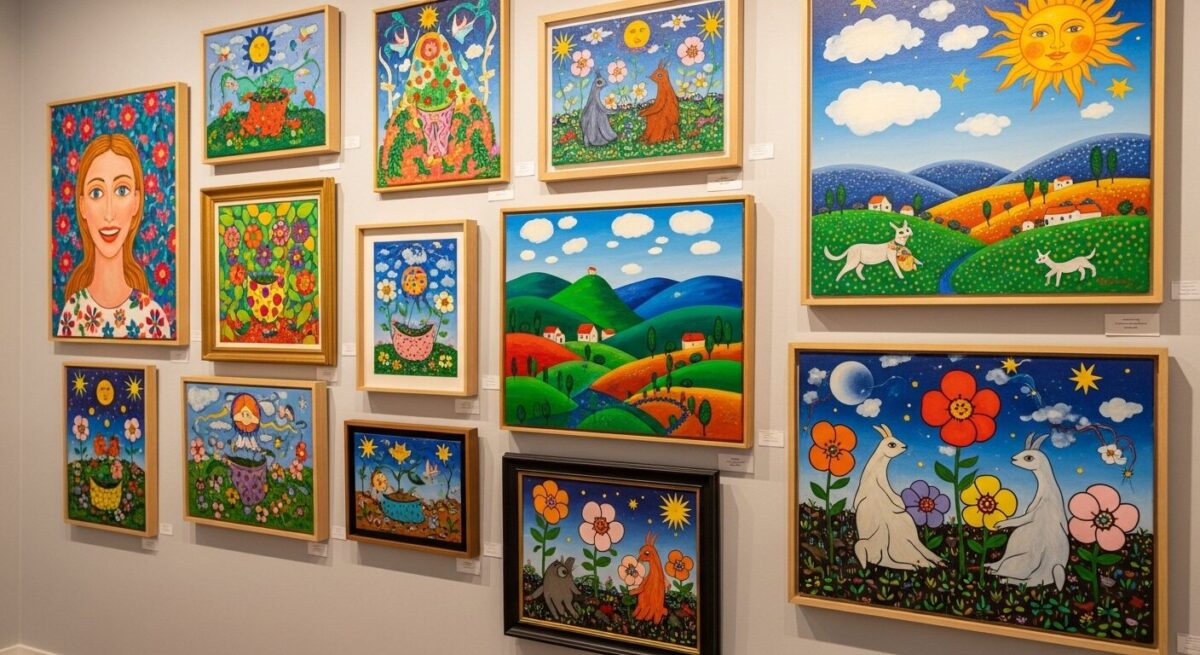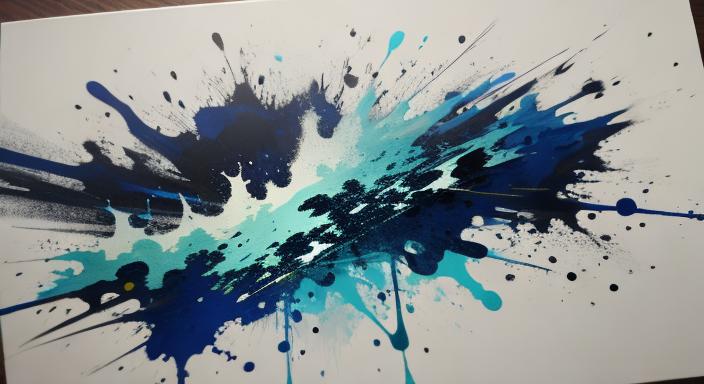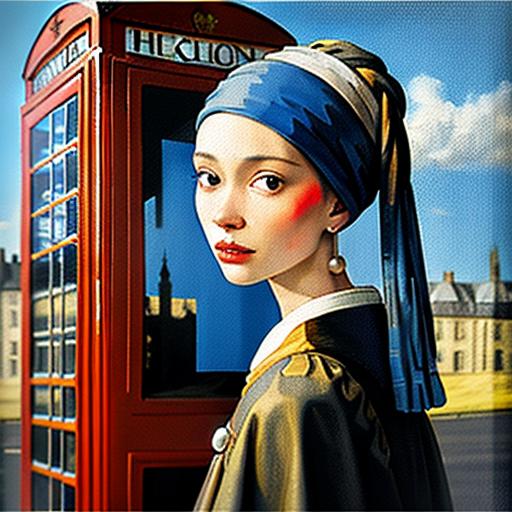Have you ever looked at a painting and felt an instant connection to its simple joy and vibrant energy? A style of art that doesn’t follow the strict rules of perspective or anatomy, yet it tells a powerful and honest story? If so, you might have been looking at a piece of Naive Art. But what is Naive Art, exactly? It’s a fascinating and often misunderstood genre, created by artists who haven’t had formal art training. They paint from the heart, with a charming innocence and a directness that can be incredibly moving.

This article will take you on a journey to discover the beautiful world of Naive Art. We’ll explore its unique characteristics, meet some of its most famous artists, and understand why this “simple” art form is so important and beloved. Get ready to be inspired by the power of creativity that comes from within!
Key Points: Understanding Naive Art
- What is Naive Art? Naive Art is a style of art created by individuals without formal artistic education or training. Their work is characterized by a childlike simplicity, vibrant colors, and a disregard for the conventional rules of art.
- Key Characteristics: Look for flattened perspectives, strong patterns, bold and unmixed colors, and a focus on storytelling over realistic depiction. The details are often meticulous and the overall feel is one of sincerity and charm.
- Famous Naive Artists: The most celebrated Naive artist is Henri Rousseau, a French post-impressionist painter. Other notable figures include the American folk artist Grandma Moses and the French painter Séraphine Louis.
- Naive Art vs. Folk Art: While similar, Naive Art is the unique expression of an individual, whereas Folk Art is often tied to a specific community or cultural tradition.
- The Appeal of Naive Art: In a world of complex and conceptual art, Naive Art offers a refreshing directness and emotional honesty that speaks to everyone. It reminds us that you don’t need to be a trained professional to create something beautiful and meaningful.
The Heart of Naive Art: Painting with Pure Imagination
Imagine a world where you could paint anything you wanted, exactly as you see it in your mind, without worrying about what your art teacher would say. That’s the world of the Naive artist. These artists are often called “self-taught,” but a better word might be “self-inspired.” They paint with an inner vision, a personal style that is not shaped by art schools or the latest trends.
The term “Naive Art” first came into use in the late 19th century to describe the work of artists like Henri Rousseau. At first, some people looked down on this style, seeing it as crude or amateurish. But soon, other artists and critics began to appreciate its unique power and beauty. They saw that Naive artists had a freedom that many trained artists had lost. They were not trying to impress anyone; they were simply expressing themselves.
One of the most exciting things about Naive Art is its diversity. Because Naive artists are not following a set of rules, their work is incredibly varied. Some Naive paintings are dreamlike and fantastical, while others are detailed depictions of everyday life. What they all have in common is a sense of wonder and a deep connection to the artist’s personal world.
The Unmistakable Look of Naive Art
So, how can you spot a Naive artwork? While every Naive artist has their own unique style, there are some common characteristics that you can look for:
- A “Flat” Look: Naive artists often ignore the rules of perspective. This means that objects in the distance might appear just as large and detailed as objects in the foreground. This gives their paintings a “flat” or two-dimensional quality, like a beautiful tapestry.
- Bright, Bold Colors: Color is a powerful tool for Naive artists. They often use bright, pure colors straight from the tube, without much mixing or shading. This gives their work a vibrant, energetic feel. To learn more about how artists use color, you can check out our guide on color theory basics.
- A Love of Detail: Naive artists often fill their paintings with intricate details. Every leaf on a tree, every brick in a building, might be carefully painted. This attention to detail draws you into the painting and makes you want to explore every corner.
- Storytelling: More than anything, Naive Art is about telling a story. These artists want to share their memories, their dreams, and their vision of the world. Their paintings are like windows into their souls.
“I paint from my own heart, from my own experience, and from my own imagination.”
Grandma Moses
Meet the Masters of Naive Art
Let’s get to know some of the most famous Naive artists who have captivated the world with their unique creations.
Henri Rousseau (1844-1910): The Customs Officer Who Dreamed of Jungles
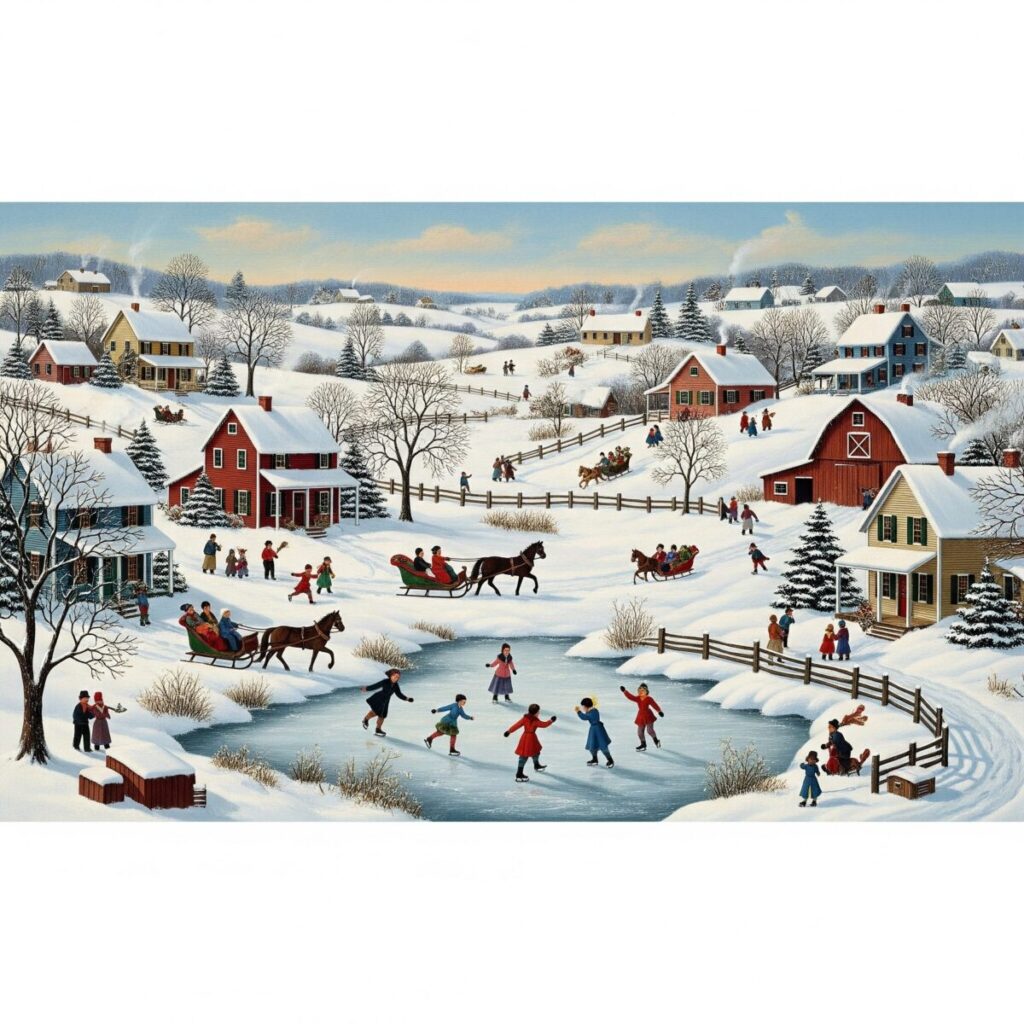
Henri Rousseau is the most famous of all Naive artists. For most of his life, he worked as a customs officer in Paris, which earned him the nickname “Le Douanier” (the customs officer). He was a self-taught painter who dreamed of exotic jungles and wild animals, even though he never left France.
His most famous painting, “The Sleeping Gypsy” (1897), is a perfect example of his magical style. It shows a woman sleeping peacefully in a desert landscape, while a lion stands over her, seemingly in awe. The scene is both mysterious and serene, a testament to Rousseau’s incredible imagination. His work had a huge influence on later modern artists, including Pablo Picasso and Frida Kahlo.
Grandma Moses (1860-1961): An American Legend
Anna Mary Robertson Moses, better known as Grandma Moses, is another beloved Naive artist. She began painting in her late 70s, after a long life as a farm wife and mother. Her charming and nostalgic paintings of rural American life quickly made her a star.
Grandma Moses painted scenes from her memories, depicting a world of horse-drawn sleighs, country fairs, and changing seasons. Her paintings, like “Sugaring Off” (1943), are filled with warmth and a deep love for the simple pleasures of life. She became a cultural icon, proving that it’s never too late to follow your passion.
A World of Untrained Talent
The world of Naive Art is vast and filled with incredible talent. Here are a few other artists worth discovering:
| Artist | Nationality | Known For |
| Séraphine Louis | French | Mystical and intensely detailed paintings of flowers and plants. |
| Alfred Wallis | British | Paintings of ships and the sea, often on scraps of cardboard. |
| Niko Pirosmani | Georgian | Expressive portraits and scenes of everyday life in his native Georgia. |

This table only scratches the surface. There are countless Naive artists around the world, each with a unique and compelling story to tell. Exploring their work is a great way to broaden your understanding of what art can be and to discover your own famous artists and their styles.
Is Naive Art the Same as Folk Art?
People often get Naive Art and Folk Art mixed up, and it’s easy to see why. Both are often created by artists without formal training, and both can have a charming, rustic quality. However, there’s a key difference.
Folk Art is usually connected to a specific community or cultural tradition. Think of things like handmade quilts, decorated pottery, or traditional wood carvings. These objects are often made using techniques that have been passed down through generations, and they reflect the shared values and beliefs of a community.
Naive Art, on the other hand, is a more personal and individual expression. It’s not about following a tradition; it’s about creating something entirely new and unique to the artist. You could say that all Folk Art is “naive” in a way, but not all Naive Art is Folk Art.
Why We Still Love Naive Art Today
In a world that can sometimes feel too fast and too complicated, Naive Art offers a breath of fresh air. It reminds us of the power of simplicity, honesty, and pure imagination. It shows us that you don’t need a fancy degree or a sophisticated theory to create something beautiful and moving.
The next time you’re in a museum or gallery, keep an eye out for these “untrained” masterpieces. You might be surprised at how much they have to say. And who knows, you might even be inspired to pick up a brush and create your own “naive” masterpiece! To learn more about different art movements and where Naive Art fits in, explore our guide on the evolution of art movements.
How to Try Naive Art Yourself!
Feeling inspired? The great thing about Naive Art is that anyone can try it! Here are a few tips to get you started:
- Forget the rules: Don’t worry about perspective, shading, or making things look “realistic.” Just paint what you feel.
- Use bright colors: Let your imagination run wild with a vibrant palette.
- Tell a story: What do you want to say with your painting? It could be a memory, a dream, or a scene from your everyday life.
- Have fun! The most important thing is to enjoy the process of creating.
If you’re interested in developing your own unique artistic voice, you might find our article on how to find your painting style helpful.
Discovering Naive Art: A Video Introduction
For a visual exploration of this captivating art form, check out this fantastic video:
The Enduring Value of Authenticity
Ultimately, the beauty of Naive Art lies in its authenticity. It is art that is not afraid to be itself, to be honest and direct and full of heart. In a world where so much is manufactured and filtered, Naive Art is a powerful reminder of the value of a unique and personal vision. It’s a testament to the idea that everyone has a story to tell, and that sometimes, the simplest stories are the most beautiful. Understanding what makes paintings valuable can also give you a new appreciation for the emotional power of Naive Art. If you are interested in a beginner’s guide to famous artist styles, you can read our article on a beginner’s guide to famous artist styles.
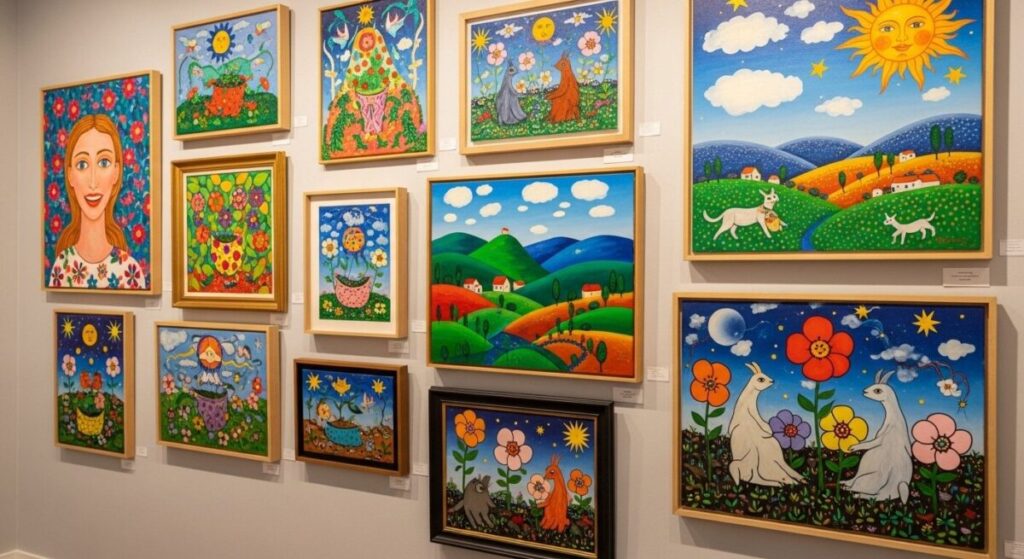
Frequently Asked Questions (FAQs)
What is an example of naive art?
A famous example of Naive Art is Henri Rousseau’s “The Sleeping Gypsy” (1897). This painting shows a woman sleeping in a desert with a lion watching over her. It has the typical features of Naive Art, like flat perspective and a dreamlike atmosphere.
What is the difference between naive and primitive art?
“Primitive art” is an older, more controversial term that was once used to describe art from non-Western cultures, as well as Naive Art. Today, the term “Naive Art” is preferred because it focuses on the artist’s lack of formal training, rather than making a judgment about their culture.
Is Frida Kahlo a naive artist?
While Frida Kahlo was largely self-taught and her work has some similarities to Naive Art (like flattened perspective and bold colors), she is not typically classified as a Naive artist. Her work is deeply personal and complex, drawing on Surrealism, symbolism, and Mexican folk art traditions.
What are the characteristics of naive art?
The main characteristics of Naive Art are a childlike simplicity, a lack of formal perspective, the use of bright and unmixed colors, strong patterns, and a focus on storytelling. The overall effect is one of sincerity and charm.
Is naive art a movement?
Naive Art is not a formal art movement like Cubism or Impressionism. It doesn’t have a manifesto or a group of artists who worked together with a common goal. Rather, it’s a category of art that describes the work of artists who share a similar approach to creating, regardless of where or when they lived.
How do you paint in naive style?
To paint in a naive style, try to forget the rules of academic art. Use bright, bold colors. Don’t worry about making things look realistic; instead, focus on telling a story and expressing your feelings. Paint from the heart and have fun!
Resources
- Tate. (n.d.). Naïve art. Tate. Retrieved July 18, 2025, from https://www.tate.org.uk/art/art-terms/n/naive-art
- Encyclopædia Britannica. (n.d.). Naïve art. Britannica. Retrieved July 18, 2025, from https://www.britannica.com/art/naive-art
- Wikipedia. (2024, June 25). Naïve art. Wikipedia. Retrieved July 18, 2025, from https://en.wikipedia.org/wiki/Na%C3%AFve_art
- KyivGallery. (2023, December 8). Naive art: from past to present. KyivGallery. Retrieved July 18, 2025, from https://kyiv.gallery/en/articles/naive-art-deep-understanding-and-conscious-choice-in-the-world-of-contemporary-art
- The Museum of Modern Art. (n.d.). Henri Rousseau. MoMA. Retrieved July 18, 2025, from https://www.moma.org/artists/5056
- Christie’s. (n.d.). Grandma Moses. Christie’s. Retrieved July 18, 2025, from https://www.christies.com/en/artists/grandma-moses

